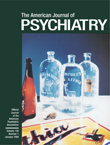Language, Learning, and Behavior Disorders: Developmental, Biological, and Clinical Perspectives
This book is concerned with three domains of child development that collectively contribute to a substantial proportion of troubling behaviors in the pediatric population. Specifically, these are spoken language, school achievement, and behavior disorders. A subtext in this book that can be found in several chapters pertains to the associations that appear among these. Although this book is not committed to any particular viewpoint regarding the basis for the relationships among these behavior domains, many of the chapters support the existence of an association among these and the comorbidity of deficits in each area. For many clinicians, the co-occurrence of these problems may be so common as to stifle curiosity over its clinical and theoretical implications; therefore, this book serves a valuable purpose by highlighting the association and the possible shared and unique causes of these deficits. This interest in the joint occurrence of these deficits by the editors is no doubt motivated by the fact that they have maintained a longitudinal study of a population sample of children in Ottawa that has provided some of the strongest empirical support for this association. In the spirit of the Ottawa study, the editors have included contributions by several authors who have conducted similar epidemiologic and genetic work in attention deficit hyperactivity disorder and reading disorder as well as spoken language disorder.
The chapters of this book are organized into six sections. The first section is concerned with theoretical issues pertaining to the affective and social properties of language as well as issues involved in the study of atypical development in general and the association of language and behavior disorder in particular. Two noteworthy chapters in this section are Dale’s contribution concerning affect and language development, which outlines a largely neglected topic, and Stevenson’s discussion of the bases of the association between language deficits and behavior disorder.
The second section explores the association between language disorder and psychiatric disorders, and the third section is concerned with summaries of research concerned with the bases of learning disabilities. The authors of most of these chapters are prominent researchers, who use these chapters to summarize research programs that have focused on one of these conditions.
The fourth section is concerned with biological issues; however, the topics of most of these stray from the general themes of the book. An exception to this is Halperin’s examination of neurochemical features of subtypes of attention deficit hyperactivity disorder. The fifth section contains largely descriptive papers of clinical intervention programs that incorporate social and behavioral objectives for these children, who have been shown in previous chapters usually to have clinical needs in several domains.
The final section summarizes outcomes studies, particularly of children with early speech, language, and reading impairments. Leading this section is a chapter by Beitchman in which the causal relationships between initial spoken language impairments and later reading and behavior disorders are explored. Inasmuch as the issues explored within this chapter probably motivated the general theme of the book, readers who are unfamiliar with this area would be advised to read this chapter first.
For the reader familiar with the work of the contributing authors, there are few surprises or new insights; however, the assembly of this work into one volume is very useful, even to those who follow these research programs. The value of this book lies in its synthesis of the literature; therefore, it is most likely to be appreciated by those conducting research on communication, learning, and behavior disorders. The book would also provide an excellent focal point for a graduate seminar in child psychopathology; however, the price may discourage its use for this purpose.



